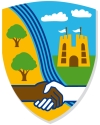Chicken Glossary
Beak. The hard, protruding portion of a bird’s mouth, consisting of an upper beak and a lower beak.
Breed. 1. A group of chickens that are like each other and different from other groups. 2. v. Pairing a rooster and hen for the purpose of obtaining fertile eggs.
Brood. 1. To care for a batch of chicks. 2. The chicks themselves.
Brooder. A heated enclosure used to imitate the warmth and protection a mother hen gives her chicks.
Cape. The narrow feathers between a chicken’s neck and back.
Clutch. 1. A batch of eggs that are hatched together, either in a nest or in an incubator (from the Old Norse word “klekja,” meaning to hatch), also called a “setting”. 2. All the eggs laid by a hen on consecutive days, before she skips a day and starts a new laying cycle.
Cock. A male chicken; also called a “rooster.”
Cockerel. A male chicken under 1 year old.
Comb. The fleshy, usually red, crown on top of a chicken’s head.
Coop. The house or cage in which a chicken lives.
Down. The soft, fur-like fluff covering a newly hatched chick; also, the fluffy part near the bottom of any feather.
Droppings. Chicken manure or “poop”.
Egg tooth. A horny cap on a chick’s upper beak that helps the chick pip through the shell.
Embryo. A fertilized egg at any stage of development prior to hatching.
Flock. A group of chickens living together.
Free range. To allow chickens to roam a yard or pasture at will.
Hatch. 1. The process by which a chick comes out of the egg. 2. A group of chicks that come out of their shells at roughly the same time.
Hen. A mature female chicken.
Incubate. To maintain favorable conditions for hatching fertile eggs.
Incubation period. 1. The time it takes for the egg to hatch, normally about 21 days. 2. The time from exposure to a disease-causing agent until the first symptom appears.
Incubator. A mechanical device for hatching fertile eggs.
Nest. A secluded place where a hen feels she may safely leave her eggs; also, the act of brooding.
Pecking order. The social rank of chickens.
Perch. The place where chickens sleep at night; the act of resting on a perch; also called a “roost.”
Pip. 1. The hole a newly formed chick makes in its shell when it is ready to hatch. 2. The act of making the hole.
Plumage. The total set of feathers covering a chicken.
Poultry. Chickens and other domesticated birds raised for food, eggs or simply as pets.
Pullet. A female chicken under 1 year old.
Roaster. A cockerel or pullet, usually weighing 4 to 6 pounds, suitable for cooking whole in the oven.
Roost. The place where chickens spend the night; the act of resting on a roost; also called “perch.”
Rooster. A male chicken; also called a “cock.”
Saddle. The part of a chicken’s back just before the tail.
Scales. The small, hard, overlapping plates covering a chicken’s shanks and toes.
Setting. A group of hatching eggs in an incubator or under a hen; the incubation of eggs by a hen (called “sitting” by some).
Edited from: http://www.raising-chickens.org/chicken-glossary.html
